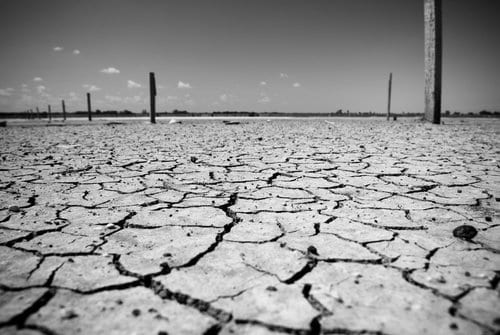This is the fourth and final in a series of articles exploring the key challenges and opportunities that the Andrews government in Victoria needs to address in its forthcoming climate change and energy strategies. The first two articles explored how Victoria can lead on renewable energy and the phase-out of coal burning power stations, and the third outlined an agenda for energy efficiency.

Designing good climate change and energy policy can take time. The trouble is, time is the one thing we don’t have. Since the Andrews government was elected in November 2014 temperature records in Victoria and globally have been repeatedly smashed. NASA reported that 2014 was the hottest year on record, and then 12 months later found that 2015 was even hotter than 2014. January, February and March 2016 each exceeded all previous records for each of those months. We have a very serious problem here.
Victoria is now back in drought and had a damaging bushfire season. Our water storages are declining and our rivers are struggling to provide for communities and industry. We’ve turned the state’s massive desalination plant on (perhaps prematurely in our view) and consumers are now paying more for that most essential of commodities. Signs of a climate emergency are everywhere.
So now it’s high time for the Andrews government to deliver a climate leadership agenda. Government departments and Ministers have been busily developing a new climate policy agenda. We’ve already had a look at the energy efficiency and renewable energy strategies being developed by Minister D’Ambrosio. Now it’s time for a look at the review of the state’s Climate Change Act and ‘Climate Change Framework’ being developed by Minister Neville and her Department.
What should a Victorian Climate Change Act achieve?
Environment Victoria along with national environment groups Environmental Justice Australia, Friends of the Earth and the ACF are seeking the rebuilding of Victoria’s Climate Change Act so that it can drive the transition of our economy to a net zero carbon future.
We think there are four key pillars that need to be enshrined in the amended Act.
- Legislated short-term and long-term targets
There should be short-term and interim targets for emissions reduction, as well as a long-term emissions reduction target consistent with limiting global temperature increase to 1.5 degrees and achieving net zero carbon emissions as quickly as possible. These emissions reduction targets should be enforceable and legislated. Enshrining the targets in legislation demonstrates that government is genuinely committed to achieving pollution reduction and provides clear benchmarks for the Victorian community and certainty for businesses.
- A Climate Charter, including a climate test, applying to all government decisions
A Climate Charter, which requires consideration of climate change in all government decision-making, accompanied by a ‘climate test’ will help us achieve our pollution reduction targets. The climate test requires that public authorities, when making an administrative or financial decision, must assess whether that decision will increase or reduce Victoria’s ability to achieve the short-term and long-term emission targets. If the effect of making the decision reduces Victoria’s ability to meet the targets, the subject of the decision must be modified until it does not reduce Victoria’s ability to achieve the short-term and long-term targets.
This climate test would be the primary tool in the Climate Change Act to ensure that climate change considerations and the achievement of pollution reduction targets are embedded in government decision-making.
- A strong framework that drives pollution reduction in the energy sector
While much of the role of the Climate Change Act should be to create frameworks and processes that drive emissions reductions across all government operations and across all sectors of the economy, the simple reality is that burning coal for electricity accounts for half of all Victoria’s greenhouse gas emissions. Those emissions come from just four coal burning power stations in the Latrobe Valley.
Any plan to reduce Victoria’s emissions must address the 50,000,000 tonnes of CO2 produced by coal burning power stations each year. One tool for reducing emissions in the electricity sector is to give the EPA the power to regulate CO2 emissions and to put limits on those emissions. The Act should require emissions intensity standards to be set for existing coal burning power stations, and those standards should tighten over time to ensure Victoria meets its pollution reduction targets.
The Act should also support business and communities to enter into climate pledges. These could identify measures that sectors or individual businesses can take to reduce their emissions- similar models are already operate in South Australia and the USA. Pledges could be implemented through a re-opening of the successful Environment and Resource Efficiency Plans program that was administered by the EPA until its early termination by the then Baillieu/Napthine government. That scheme delivered significant cost savings, job creation and environmental benefits.
- Accountability, enforceability and transparency
Finally, the Act needs a number of measures to ensure it operates effectively:
- Extended legal standing for the public to bring legal action when there is non-compliance with the Act or the Charter.
- A requirement for each department to regularly report on climate risks
- More prompt reporting of greenhouse gas emissions is needed
- The Act should make both the Premier and the Minister accountable for ensuring Victoria meets both our short-term and long-term emissions reduction targets.
Victoria and the world desperately needs leadership on climate change. To date the Andrews government has proven progressive and adept politically, particularly on social issues. Now it’s time for them to deliver a climate leadership agenda that will deliver for the environment, for social justice and for the state’s economy. Not only can Victoria eliminate its greenhouse pollution and create thousands of jobs in the process, with the right leadership and strategy we can export climate solutions to the world and demonstrate what action for a safe climate looks like. Now that would be a political legacy to be proud of.
Mark Wakeham is the CEO of Environment Victoria










